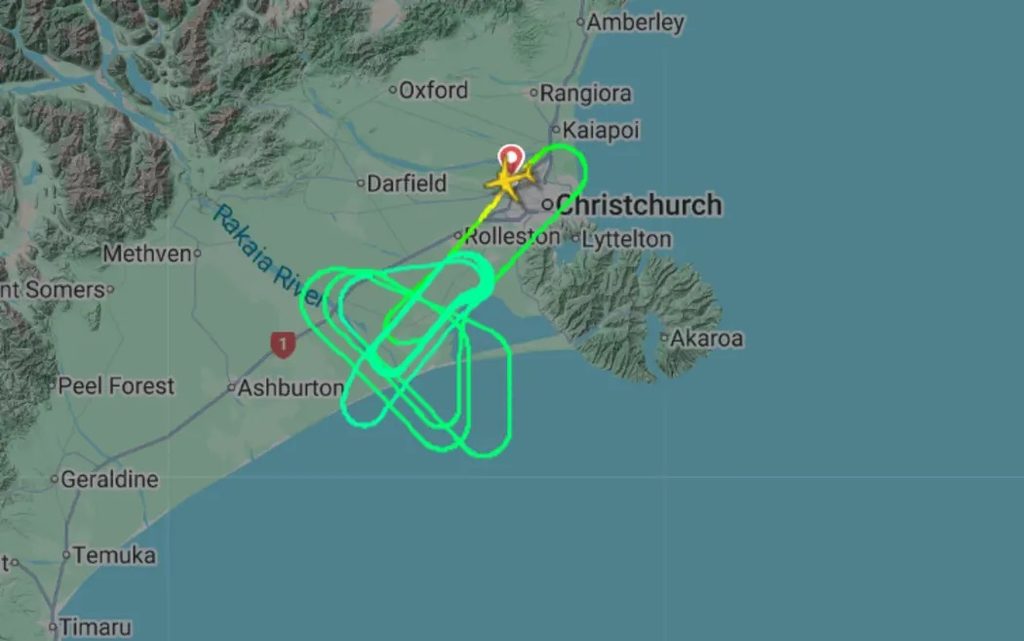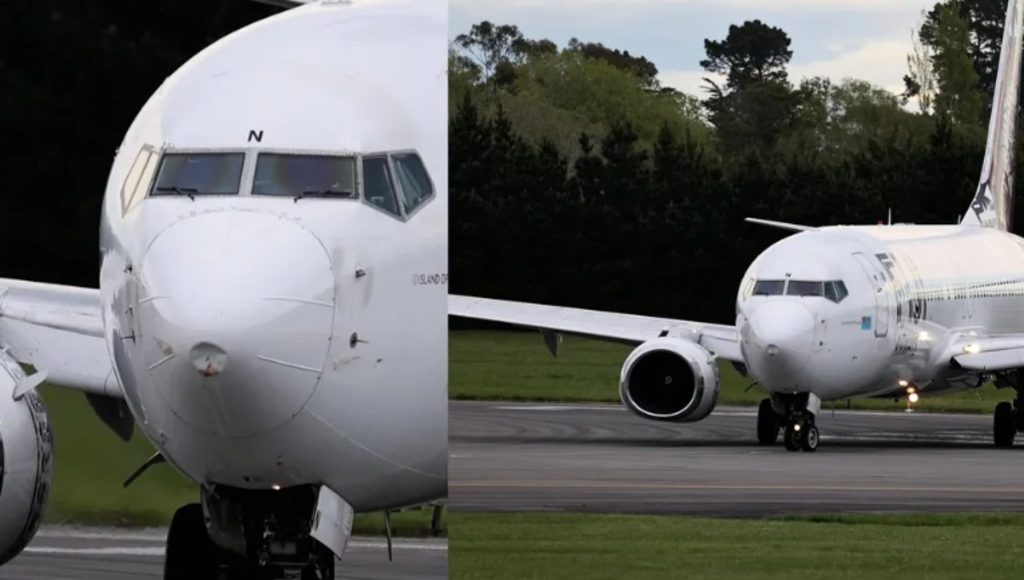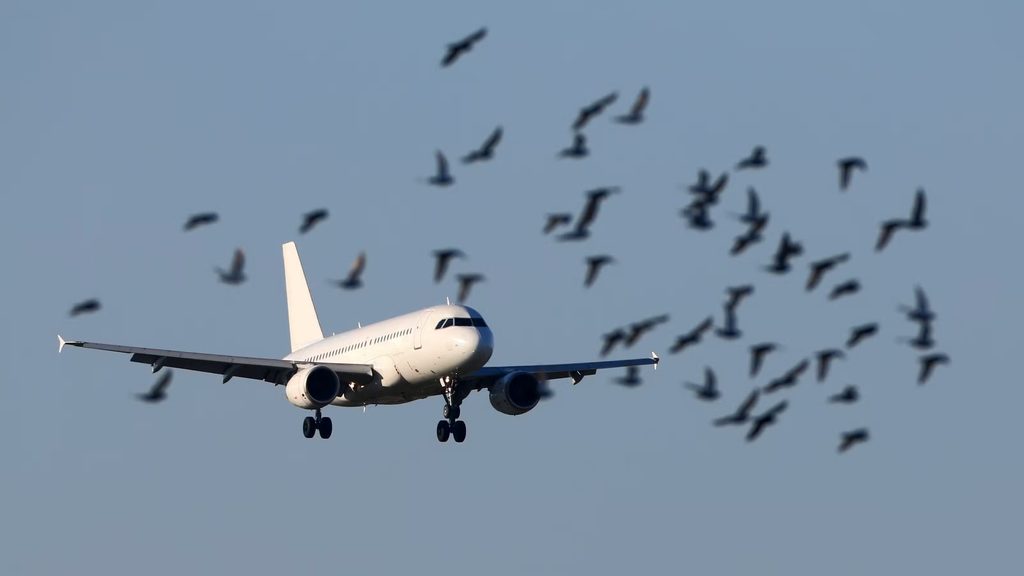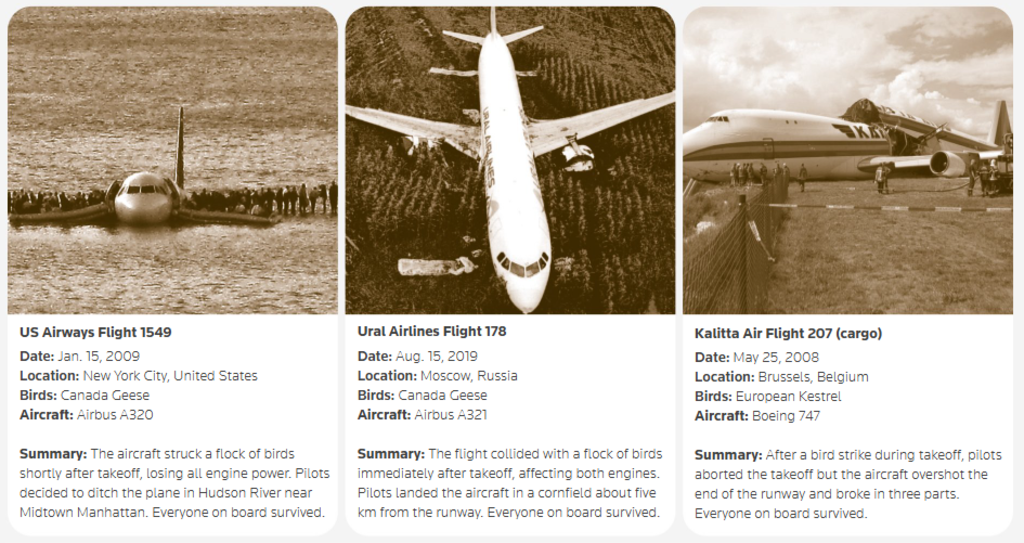LAST week, national airline Fiji Airways flight FJ450 experienced a bird strike shortly after taking off from Christchurch, New Zealand.
The plane circled the skies above Christchurch for a while before safely landing back at the airport.
Nobody was injured and all passengers later departed safely for Nadi.
Bird strike is an uncommon phenomenon in Fiji therefore not many are aware of it. However, it could be fatal.
This week The Sunday Times answers some questions about bird strikes.
What is a bird strike?
According to en.wikipedia.com a bird strike (sometimes called birdstrike, bird ingestion (for an engine), bird hit, or bird aircraft strike hazard (BASH)) is a collision between an airborne animal (usually a bird or bat) and a moving vehicle (usually an aircraft).
The term is also used for bird deaths resulting from collisions with structures, such as power lines, towers, skyscrapers and wind turbines.
Is it common?
Collisions between aircraft and birds have been occurring since the beginning of aviation, www.sciencedirect.com says.
These collisions can happen either during the take-off or landing roll or the cruise flight of the aircraft, when birds are more likely to be present at lower altitudes.
Bird strikes threaten the safety of flight operations, putting the lives of both passengers and crew onboard the aircraft and birds at risk.
It causes financial loss to the aviation industry in the form of damages to aircraft annually.
Are there any statistics on bird strikes?
According to the International Civil Aviation Organization (ICAO), there were more than 270,000 reports of wildlife strikes to aircraft between 2016 and 2021.
Only 3% of these incidents reported some form of damage to parts of the aircraft.
The United States-based Federal Aviation Authority (FAA) also tracks reports of wildlife strikes and similarly shows over 90% of incidents had no damage to the aircraft.
When was the first bird strike?
The Wright brothers first flew a fixed-wing airplane in 1903.
According to www.atlanticjetpartners.com two years later, in 1905 Wilbur Wright, brother to Orville Wright, had the first reported bird strike.
Seven years after that, in April 1912 a gentleman by the name of Calbraith Perry Rodgers became the first known casualty after running into a flock of seagulls while flying over Longbeach, California.
The gulls caused the engine to fail resulting in the fatal crash.
Is bird strike fatality common?
Bird strikes with aircraft pose a serious threat to human safety.
Since the first casualty in 1912, 795 lives have been lost to collisions between aircraft and birds, not to mention the countless bird fatalities, says theconversation.com
As aircraft get faster, quieter, larger and more numerous, the risk of serious accidents increases accordingly. Every year, the aviation industry incurs damages worth billions of dollars.
How to pilots handle a bird strike?
According to Wikipedia, the initial response to a bird strike is conducting an assessment.
Pilots quickly check the aircraft systems, engine performance, and any unusual vibrations or sounds.
If there is an indication of engine trouble, the pilot follows emergency checklists to secure the aircraft.
Where on a plane will birds normally strike?
According to ICAO reports, most strikes happen at the front of the plane and to the wings, engine or propeller.
However, while most planes can stabilise themselves with just one engine in the case of a strike, if both engines are affected this can greatly increase the severity of the outcome to the aircraft or humans on board.
The financial impact is also significant, as bird strikes cost the global aviation industry an estimated $1.2 billion annually in damages and lost revenue.
Why do planes circle before landing following a bird strike?
In the Fiji Airways case, the Boeing 737-808 was forced to circle for two hours to burn off fuel.
This was done to meet the required landing weight.
Planes have a maximum landing weight (MLW) to ensure a safe landing by preventing structural damage to the airframe and landing gear, and to allow the plane to stop safely.
What if a bird strike hits the windshield?
The website avgeeks.aero says during a bird strike there could be cracks and damage to the windshield, although this is rare. The impact can cause cracks that obscure the pilots’ visibility
A strong impact could cover it with blood, feathers, or debris, reducing visibility.
A bird strike can also cause a sudden loud noise which may startle the pilots.
How do pilots respond during a bird strike?
How pilots respond to bird strikes depends on where the bird impacted the plane, how much damage was caused, and what the airline dictates their pilots should do.
Every airline has reporting criteria for pilots after a bird strike.
The Fiji Airways flight was forced to circle for two hours above Christchurch to burn off fuel after a bird strike. Picture:RNZ/Screenshot:Flightradar24

A slight dent on the nose of Fiji Airways plane. Picture: CHRIS SKELTON/STUFF

Bird strikes are common in modern aviation. Picture: simpleflying.com



